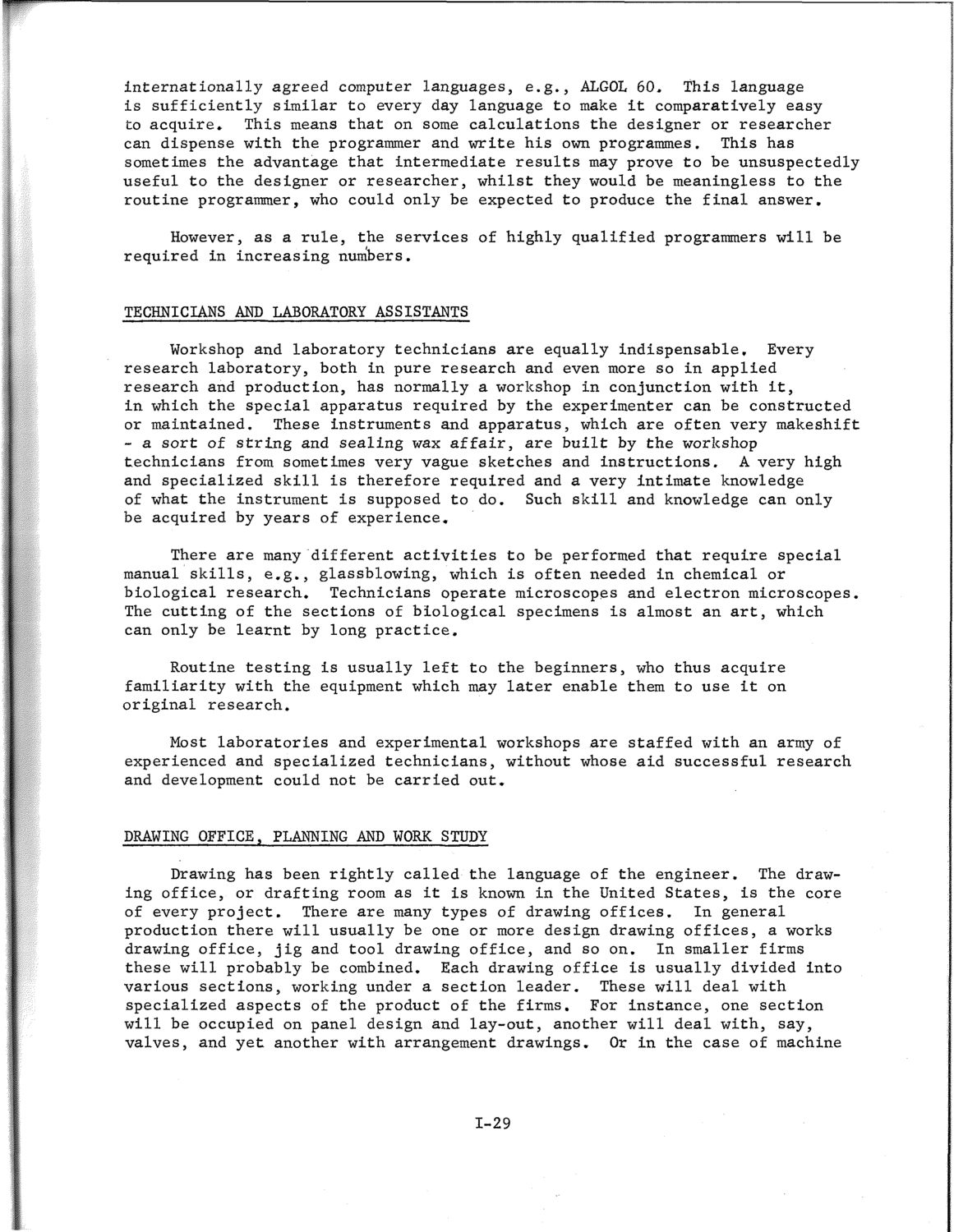| |
| |
Caption: SWE - Proceedings of the First International Conference of Women Engineers and Scientists
This is a reduced-resolution page image for fast online browsing.

EXTRACTED TEXT FROM PAGE:
internationally agreed computer languages, e.g., ALGOL 60. This language is sufficiently similar to every day language to make it comparatively easy to acquire. This means that on some calculations the designer or researcher can dispense with the programmer and write his own programmes. This has sometimes the advantage that intermediate results may prove to be unsuspectedly useful to the designer or researcher, whilst they would be meaningless to the routine programmer, who could only be expected to produce the final answer. However, as a rule, the services of highly qualified programmers will be required in increasing numbers. TECHNICIANS AND LABORATORY ASSISTANTS Workshop and laboratory technicians are equally indispensable. Every research laboratory, both in pure research and even more so in applied research and production, has normally a workshop in conjunction with it, in which the special apparatus required by the experimenter can be constructed or maintained. These instruments and apparatus, which are often very makeshift - a sort of string and sealing wax affair, are built by the workshop technicians from sometimes very vague sketches and instructions. A very high and specialized skill is therefore required and a very intimate knowledge of what the instrument is supposed to do. Such skill and knowledge can only be acquired by years of experience. There are many different activities to be performed that require special manual skills, e.g., glassblowing, which is often needed in chemical or biological research. Technicians operate microscopes and electron microscopes. The cutting of the sections of biological specimens is almost an art, which can only be learnt by long practice. Routine testing is usually left to the beginners, who thus acquire familiarity with the equipment which may later enable them to use It on original research. Most laboratories and experimental workshops are staffed with an army of experienced and specialized technicians, without whose aid successful research and development could not be carried out. DRAWING OFFICE, PLANNING AND WORK STUDY Drawing has been rightly called the language of the engineer. The drawing office, or drafting room as it is known in the United States, is the core of every project. There are many types of drawing offices. In general production there will usually be one or more design drawing offices, a works drawing office, jig and tool drawing office, and so on. In smaller firms these will probably be combined. Each drawing office is usually divided into various sections, working under a section leader. These will deal with specialized aspects of the product of the firms. For instance, one section will be occupied on panel design and lay-out, another will deal with, say, valves, and yet another with arrangement drawings. Or in the case of machine 1-29
| |